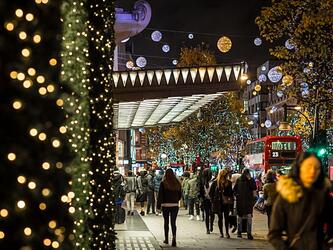Saving the high street
The decline of the high street as a fully functioning and vibrant place for business is well documented. Such is the scale of the problem that retail expert Mary Portas was appointed by the government in 2011 to conduct an independent review.
Portas outlined many causes for the poor health of the high street. “The phenomenal growth of online retailing, the rise of mobile retailing, the speed and sophistication of the major national and international retailers, the epic and immersive experiences offered by today’s new breed of shopping mall, combined with a crippling recession, have all conspired to change today’s retail landscape,” she said.
“For the high street to survive, businesses need to start thinking longer-term and consider their impact on the broader retail environment”
The large number of recommendations outlined in the published report were reflective of the multiple stakeholders (councils, landlords, local communities, national brands, independent shopkeepers) who have an interest and some influence in making the changes required to save the high street: whether that’s easing restrictions in existing legislation, rethinking how decisions are made on the use of retail properties, the development of sites or the setting of rates.
Ultimately, collective action is needed. Portas wants to create “Town Teams” – what she describes as “visionary, strategic and strong operational management teams for high streets”. These teams will need to gather information about what high streets’ need in the context of a town’s broader strengths and uniqueness. It is the analysis of this data that will build the foundations for the Town Team’s vision.
Research to the rescue
Assuming it is possible to create effective Town Teams – and Portas’s 10 pilot schemes are trying to prove it is – providing access to and sharing secondary research data, like geodemographic profiles, would be useful.
Primary research could also be used to understand the barriers shoppers face in using the high street and to discover what high streets need to do to make them into vibrant places. In many situations a survey of locals would provide a good indication to an entrepreneur as to whether their business is viable. Perhas they could even present their business plan to the Town Team and test their ideas on townsfolk before committing to a long lease (like a community based Dragons’ Den)? This approach could help to improve their chances of survival.
Survey panels could be built up over time to represent the general community. Online surveys, discussion boards and focus groups should attain good levels of response given the vested interest in making the community’s high street a success.
Demand surveys and assessments of economic profitability are nothing new, of course, but they are normally driven by and are commissioned for the sole use of large retailers rather than being shared for the benefit of the broader trading community. For the high street to survive, businesses need to start thinking longer-term and consider their impact on the broader retail environment.
As Portas points out: “Responsible big businesses support and care about the high street. As well as government putting town centres first, businesses have a responsibility for considering their impact on the local area. Supporting high streets to thrive is an economic win for business but also a key part of their social responsibility”.
Perhaps clientside insight professionals working in retail should start considering ways in which they can help the high street as well as their own firm? Maybe agencies should be giving more back to the town’s where they work or where their executives live. Local knowledge and empathy combined with professional advice could help high street businesses make the right decisions.
Peter Shreeve is an independent research consultant

We hope you enjoyed this article.
Research Live is published by MRS.
The Market Research Society (MRS) exists to promote and protect the research sector, showcasing how research delivers impact for businesses and government.
Members of MRS enjoy many benefits including tailoured policy guidance, discounts on training and conferences, and access to member-only content.
For example, there's an archive of winning case studies from over a decade of MRS Awards.
Find out more about the benefits of joining MRS here.













2 Comments
Maria
13 years ago
There is an awful lot a retail store can already do to become part of the immersive shopping experience that we enjoy from bigger shopping centres, in bringing mobile and online into their stores and using it to their advantage. One of many good blog posts on this here: http://www.intersperience.com/blog/post/03/2013/The-shop-of-the-future--Part-2- I think engaging with digital would go along way to protect stores on the town high street and keep the experience they offer relevant to all consumers, high street stores can't be looked at seperately to the rest of our shopping habits - it's where they fit in to modern consumer behaviour. Often I go to my local town high street on a Saturday and it's absolutely packed - but all of us must only go on Saturdays according to the declining figures
Like Reply Report
Peter Shreeve
13 years ago
Hi Maria, I absolutely agree and the focus on technology could have been an article in itself. I agree that as smartphone penetration continues apace that interaction with it either within the proximity of the shop or inside it could make the experience very different. The use of QR codes is a prime example. If the mobile is to make a real impact then the price has to be right for the small independent. Will Priority moments on O2 reach your local high street independent? Perhaps apps with rewards and deals that work within a town centre could entice shoppers. Bristol is trying its own currency across 350 shops! Could you load your mobile with money that also gives you a discount if you shop locally? I am sure there are many ways to approach this and it does not necessarily require just technology but also the willingness of businesses to work together.
Like Reply Report